
With only two second-place finishers in 14 races, any supposed home ground advantage counted for nothing in California – so what went wrong at Santa Anita?
 “Once is happenstance. Twice is coincidence. Three times is enemy action.”
“Once is happenstance. Twice is coincidence. Three times is enemy action.”
The quote comes from Goldfinger, written by Ian Fleming, but seems appropriate in the wake of the 2023 Breeders’ Cup at Santa Anita Park when confronted by the accumulated failures of California-based runners to make much of a dent in the two days of international competition.
Home teams are supposed to have an advantage. They sleep in their own beds, enjoy home cooking, and consort with familiar friends. There are no issues with times zones, weather patterns, or local dialects. The home side comes equipped with its own troop of fans, as well, anxious for success and cheering them on.
The 40th Breeders’ Cup was offered on Nov. 3-4 for the 16th time in Southern California and a record 11th time at Santa Anita. But for the first time – cue sad music – the local stables were shut out stone cold, 14-0, from the purple splendor of the Breeders’ Cup winner’s circle.
Even in the days when there were only seven races on a single Breeders’ Cup program, the California racing community was consistently represented at the top of the podium. In 1984, expats Neil Drysdale and John Gosden both led over winners from their Hollywood Park barns, while Joe Manzi had one of his own until the stewards took it away.
In 1986 at Santa Anita, the locals bagged four of the seven races, including two for Wayne Lukas, one for Mel Stute, and the Classic for Skywalker and Michael Whittingham.
Back at Hollywood Park in 1987, it was Lukas again with a double, Stute taking another, and Whittingham – this time Michael’s dad, Charlie – winning the Classic with Ferdinand. In 1993, the Cup returned to Santa Anita, where trainers Richard Mandella, Neil Drysdale, Derek Meredith, and Randy Winick accounted for five of the seven events. Fed up, invaders rallied at the 1997 Cup that marked Hollywood Park’s last hurrah, but at least Jenine Sahadi kept the locals from a shutout by taking the Sprint with Elmhurst.
Unprecedented four-bagger
Mandella’s unprecedented four-bagger in 2003 at Santa Anita took the breath away, but never forget that David Hofmans added a fifth win for the Californians by taking the Distaff with Adoration.
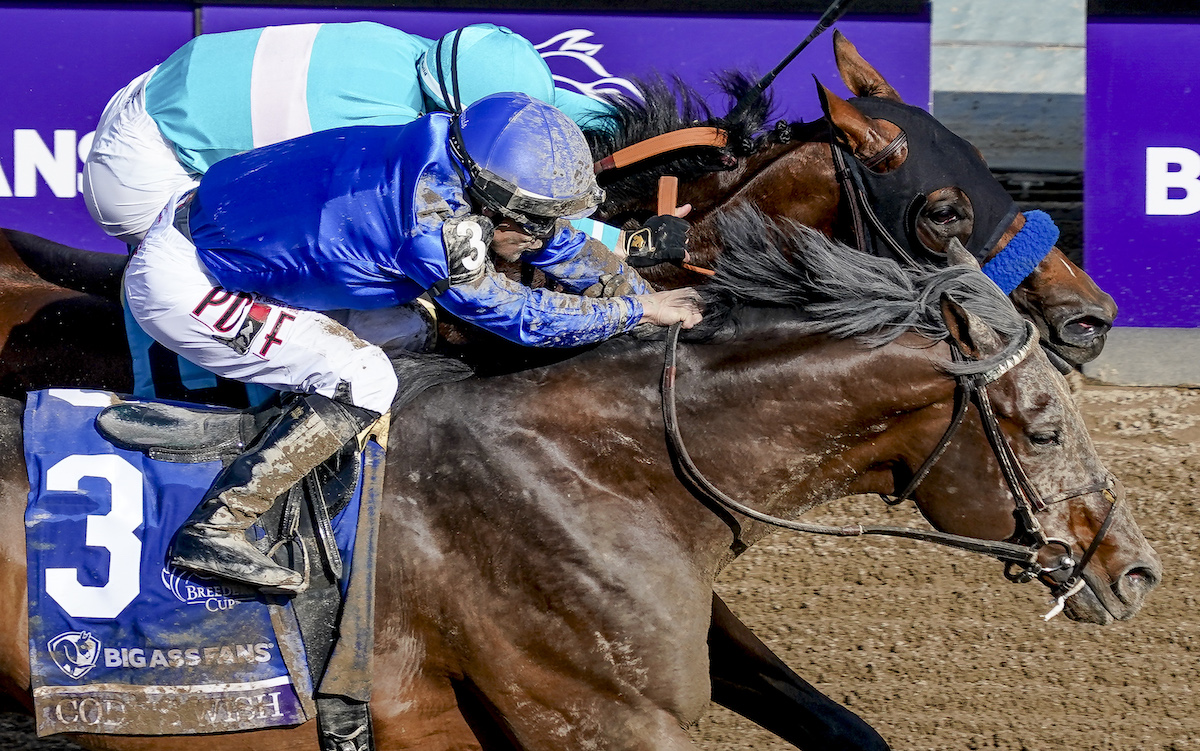 Then came back-to-back Santa Anita editions over synthetic surfaces in 2008 and 2009, by which time the Cup had gone to the Friday-Saturday format of 14 races. Californians won half the races in 2008 and four more in 2009, igniting a very different chorus of grumbling from owners and trainers who had brought conventional dirt horses to town.
Then came back-to-back Santa Anita editions over synthetic surfaces in 2008 and 2009, by which time the Cup had gone to the Friday-Saturday format of 14 races. Californians won half the races in 2008 and four more in 2009, igniting a very different chorus of grumbling from owners and trainers who had brought conventional dirt horses to town.
Back on loam at Santa Anita in 2012, only Beholder won for the home team, while Mizdirection scored on turf. The results were hardly discouraging, however, since 11 other local runners finished second or third across the 15 races.
The 2013 Breeders’ Cup could have been held at Hollywood Park, but its closure was imminent and they were not interested, leaving Santa Anita the lone viable West Coast host for three consecutive years. Five different local stables sent forth five winners in 2013 and three more in 2014 to hold their own against an increasingly robust challenge from out of town.
Those challenges have become even more formidable in recent years with the rise of the Brad Cox stable and continued pressure from East Coast stalwarts Todd Pletcher, Chad Brown, and Bill Mott, each of them infused with daunting investment from such patrons as Godolphin, Juddmonte Farm, Mike Repole, and Seth Klarman.
As a result, chances are remote that there ever can be another home field Breeders’ Cup like 2016 again, when the locals seized the Santa Anita stage by winning five of the 13 races and providing titanic intramural finishes with Beholder and Songbird in the Distaff and Arrogate and California Chrome in the Classic.
Almost entirely marginalized
It was not merely that Californians were shut out of the 2023 prizes. Their 28 starters were almost entirely marginalized in the face of the invaders. The data is tough to swallow:
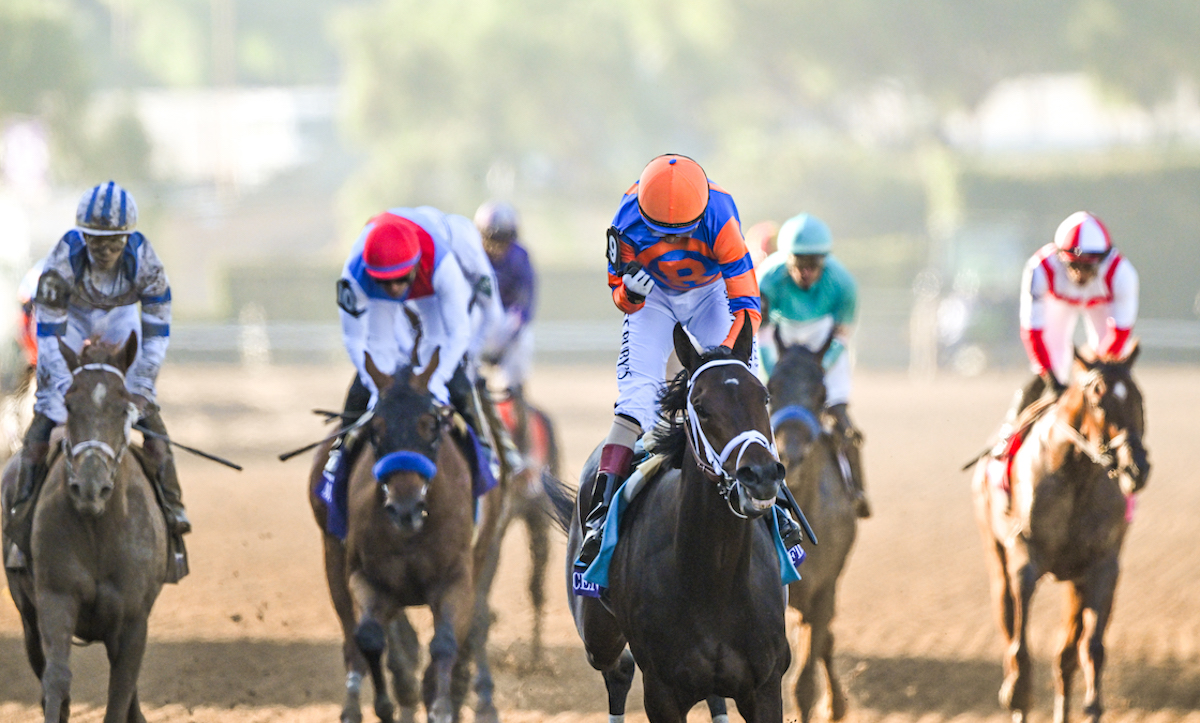 • Bob Baffert, a winner of 18 Breeders’ Cup races, trained eight of the 28. The best of those were National Treasure, second in the Dirt Mile, and Muth, second in the Juvenile.
• Bob Baffert, a winner of 18 Breeders’ Cup races, trained eight of the 28. The best of those were National Treasure, second in the Dirt Mile, and Muth, second in the Juvenile.
• Phil D’Amato sent out four starters, including favored Motorious in the Turf Sprint (5th) and Gold Phoenix in the Turf (4th).
• John Sadler, winner of the 2022 Classic at Keeneland with Flightline, had three starters, none finishing higher than fifth.
• The average finish position of the 28 California-based horses was sixth; the average mutuel price was 26-1, with odds ranging from Tamara’s 80 cents on the dollar (or 4-5 in UK terms) in the Juvenile Fillies to 74-1 on Masteroffoxhounds in the Mile.
• All Breeders’ Cup starters get paid these days just for finishing the course. Juvenile runner-up Muth cashed the biggest check among the locals of $340,000, while 19 runners went home with the minimum consolation prize for coming home sixth and lower.
Santa Anita and Del Mar have hosted four of the last six Breeders’ Cups. Over those four renewals, Californians have won only seven of 55 races. Bob Baffert’s powerhouse stable has won precisely one event, the 2021 Juvenile at Del Mar with Corniche.
Peter Miller accounted for three wins at home tracks with sprinters Roy H., Stormy Liberal and Belvoir Bay. Peter Eurton surprised the 2019 Juvenile with Storm The Court, and Michael McCarthy won the 2021 Filly & Mare Sprint with Ce Ce.
And that’s it. What gives?
‘Too soon to call it a trend’
“It wasn’t a good Breeders’ Cup for our local horsemen, but it’s too soon to call it a trend,” said Rick Hammerle, former racing secretary at Santa Anita and Del Mar and currently a consultant to 1/ST Racing.
“Not every day is the Fourth of July. And after Flightline last year at Keeneland, what do you follow that with?”
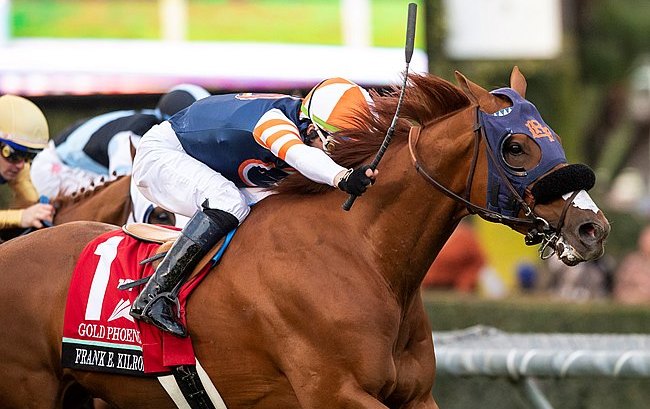 Fair enough. Flightline was a California-based horse who probably would have won a Breeders’ Cup Classic run on the far side of the moon. The goodwill generated by his rare but remarkable performances always shone a kind light on the West Coast. But then to come back the following year with a shutout and just two second-place finishes from 14 events? Seems like a steep fall.
Fair enough. Flightline was a California-based horse who probably would have won a Breeders’ Cup Classic run on the far side of the moon. The goodwill generated by his rare but remarkable performances always shone a kind light on the West Coast. But then to come back the following year with a shutout and just two second-place finishes from 14 events? Seems like a steep fall.
It can be argued that any North American runner is up against a hard wall in Breeders’ Cup grass races, no matter where they are held.
“Turf racing has been dominated by the Europeans over the last dozen years or so, but it looks like they’re getting a lot better at picking and choosing the right horses to send,” Hammerle said. “As a result, they’ve really stepped up their dominance.”
Hammerle also serves on the American Graded Stakes Committee and in the past has been part of the Breeders’ Cup Selection Committee, as well as the Longines World's Best Racehorse Rankings Committee. He correctly pointed out that the fourth-place finish of Del Mar Handicap winner Gold Phoenix, at just shy of 52-1, was an accomplishment worth celebrating, given that European stars King Of Steel, Mostahdaf, and Onesto followed in his wake.
Understandably proud
Phil D’Amato, Gold Phoenix’s trainer, was understandably proud of his horse, while correctly observing that West Coast owners would need to spend more on European bloodstock if they were going to be competitive at the Breeders’ Cup level.
But why shell out the money it takes to buy a G2 horse to compete with Auguste Rodin and Inspiral once a year when you can snare a maiden who raced at Dundalk – like Gold Phoenix – and win more than $1m over a couple of fruitful years picking off California prizes against horses with similar roots?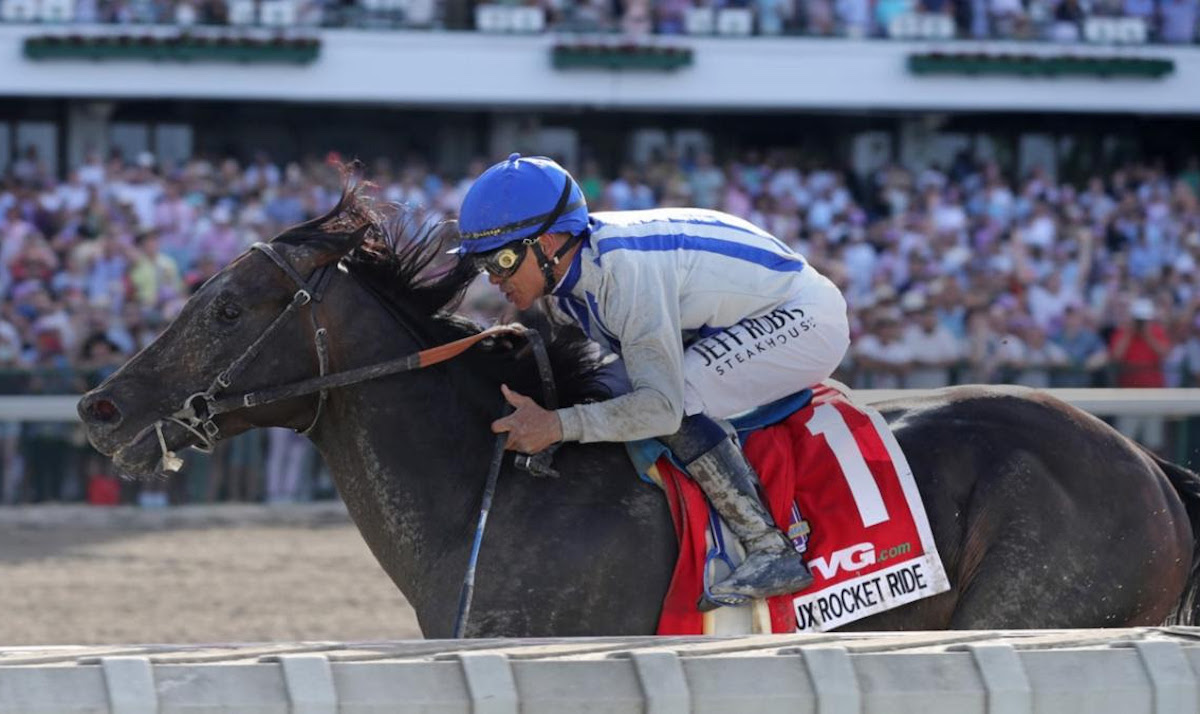
As far as main track events, the current scene in California leans so heavily on the Bob Baffert stable that Breeders’ Cup success usually will rise and fall with the performance of his runners.
On any given Saturday of the regular 2023 season, Baffert stars Adare Manor, Eda, Speed Boat Beach, and Prince Of Monaco could be found in the thick of the best graded stakes competition, but they were also-rans at Breeders’ Cup 2023.
Hammerle also pointed out the tragic fact that California interests lost two potential contenders just days before their Breeders’ Cup dates. Haskell winner Geaux Rocket Ride was euthanized after post-op complications following surgery to repair a fracture sustained in a workout, while Practical Move, winner of the 2023 Santa Anita Derby, died of an apparent cardiac event.
“One was among the top picks for the Classic and the other certainly in the mix for the Dirt Mile,” Hammerle said. “If they had run, this might not even be a story.”
Other factors impinge. It is no secret that of the major racing centers, California purses are having a hard time competing with racetracks whose coffers are supplemented by casino gambling.
Aircraft carrier issues
Potential owners performing their due diligence will not fail to notice that a maiden race worth $70,000 at Del Mar will offer $100,000 at Churchill Downs or $110,000 at Saratoga, and while a G1 grass race out west might boast a $300,000 purse, a similar race east of the Mississippi with counter with $500,000 to $750,000.
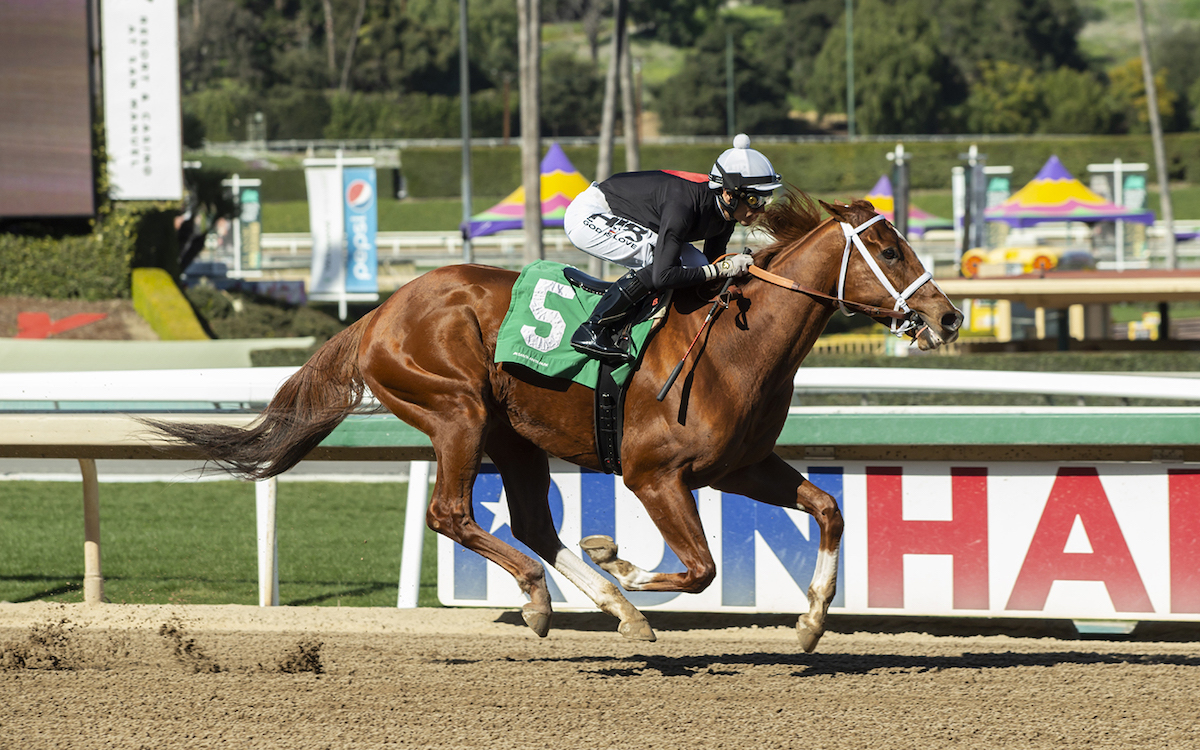 The imbalance of the graded stakes system also tends to suppress investment in West Coast stables, which impacts Breeders’ Cup level quality and even participation.
The imbalance of the graded stakes system also tends to suppress investment in West Coast stables, which impacts Breeders’ Cup level quality and even participation.
For instance, there were 13 G1 races spread across the seven months Santa Anita operated in 2023. By comparison, the two brief Keeneland meets in summer and fall offered 11 races rated G1, plus another 17 were presented during the 2023 Saratoga season for the same general pool of top stables.
Purse competition, graded stakes imbalance, and ownership investment are all aircraft carrier issues that will be difficult to turn around in favor of increased depth and breadth in West Coast quality.
Until then, Californians will cling to their homegrown heroes, like The Chosen Vron, who went into the 2023 Breeders’ Cup Sprint on a run of eight straight victories, including the G1 Bing Crosby Stakes at Del Mar. He finished fifth, but it wasn’t for lack of trying.
• Read all Jay Hovdey's features in his Favorite Racehorses series
Horse racing at the movies: Phar Lap – how a Melbourne Cup icon became a hero of the silver screen
View the latest TRC Global Rankings for horses / jockeys / trainers / sires


